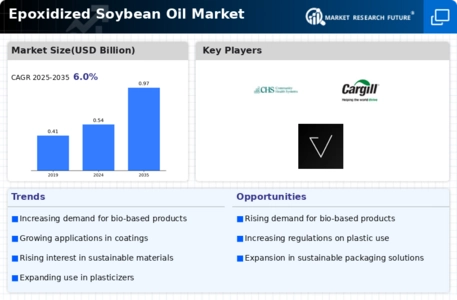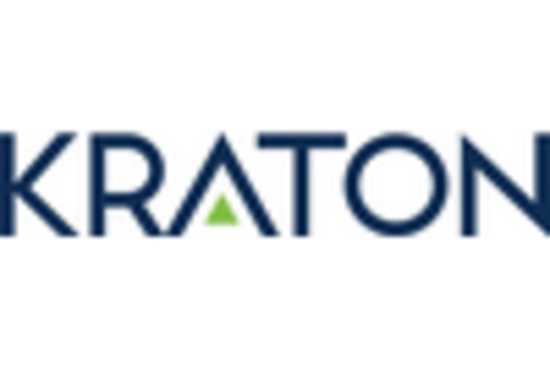Rising Demand for Bio-based Products
The increasing consumer preference for bio-based products is a pivotal driver in the Epoxidized Soybean Oil Market. As environmental concerns gain traction, industries are shifting towards sustainable alternatives. Epoxidized soybean oil, derived from renewable resources, aligns with this trend, offering a viable substitute for petroleum-based products. The market for bio-based chemicals is projected to grow significantly, with estimates suggesting a compound annual growth rate of over 10% in the coming years. This shift not only reflects a change in consumer behavior but also indicates a broader movement towards sustainability in manufacturing processes. Consequently, the Epoxidized Soybean Oil Market is likely to experience heightened demand as manufacturers seek to meet these evolving consumer expectations.
Technological Advancements in Production
Technological innovations in the production of epoxidized soybean oil are significantly influencing the Epoxidized Soybean Oil Market. Advances in processing techniques have led to improved efficiency and reduced costs, making the production of epoxidized soybean oil more economically viable. For instance, the development of new catalysts and reaction conditions has enhanced the yield and purity of the final product. As production methods become more refined, the market is likely to see an increase in supply, which could further drive down prices and make epoxidized soybean oil more accessible to various industries. This technological progress not only supports the growth of the Epoxidized Soybean Oil Market but also encourages wider adoption across sectors that prioritize sustainability.
Growing Awareness of Environmental Impact
The heightened awareness of environmental issues among consumers and businesses is a driving force in the Epoxidized Soybean Oil Market. As stakeholders become more conscious of the ecological footprint of their choices, there is a marked shift towards sustainable materials. Epoxidized soybean oil, known for its lower environmental impact compared to traditional petrochemical products, is gaining traction. Market Research Future indicates that consumers are willing to pay a premium for products that are environmentally friendly, which could lead to increased sales in sectors utilizing epoxidized soybean oil. This growing awareness not only influences purchasing decisions but also encourages manufacturers to prioritize sustainability in their product offerings, thereby propelling the Epoxidized Soybean Oil Market forward.
Expanding Applications in Various Industries
The versatility of epoxidized soybean oil is a crucial factor driving its adoption across multiple sectors within the Epoxidized Soybean Oil Market. This compound is increasingly utilized in coatings, adhesives, and plastics, where its properties enhance performance and sustainability. For instance, the paint and coatings industry is projected to witness a growth rate of approximately 5% annually, with epoxidized soybean oil playing a significant role in formulating eco-friendly products. Additionally, its application in the automotive and construction sectors is expanding, as manufacturers seek to reduce their environmental footprint. The diverse applications of epoxidized soybean oil suggest a robust growth trajectory for the market, as industries continue to explore innovative uses for this bio-based material.
Regulatory Incentives for Sustainable Practices
Regulatory frameworks promoting sustainable practices are emerging as a significant driver for the Epoxidized Soybean Oil Market. Governments are increasingly implementing policies that encourage the use of bio-based materials, providing incentives for companies to adopt environmentally friendly alternatives. For example, regulations aimed at reducing carbon emissions and promoting renewable resources are likely to bolster the demand for epoxidized soybean oil. These policies not only create a favorable market environment but also stimulate innovation as companies strive to comply with new standards. As regulatory support continues to strengthen, the Epoxidized Soybean Oil Market is expected to benefit from increased investment and growth opportunities.

















Leave a Comment